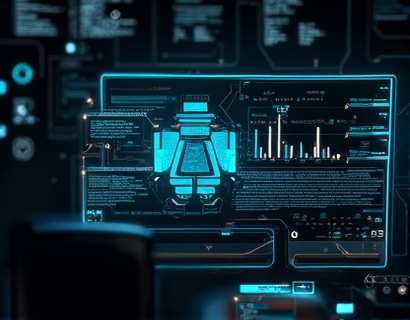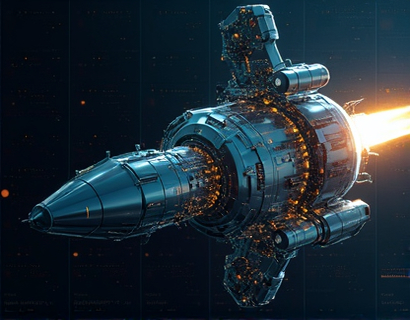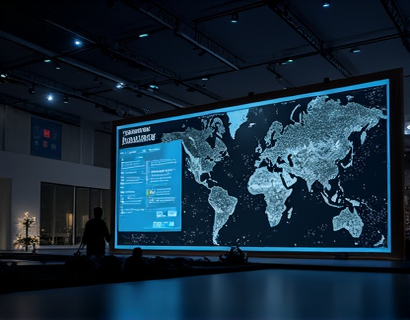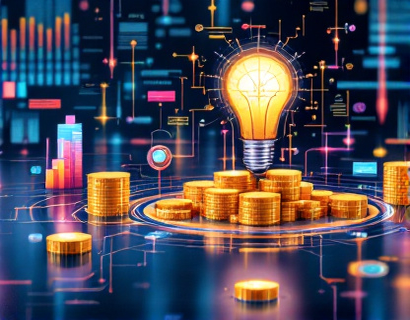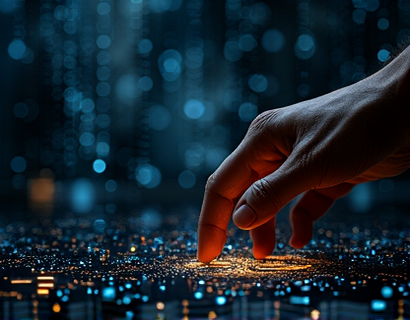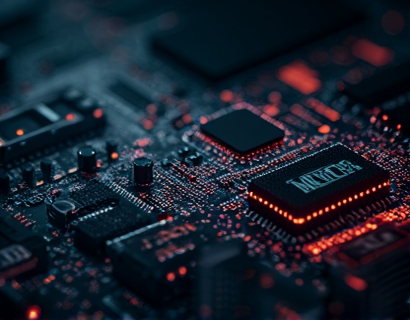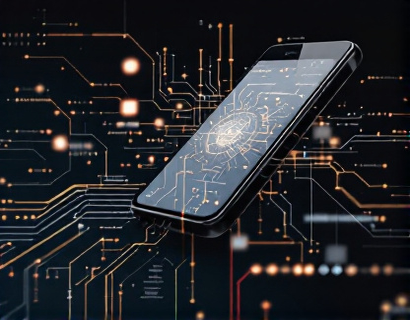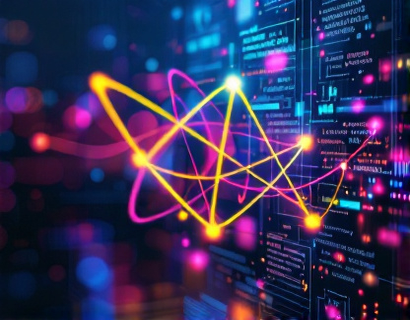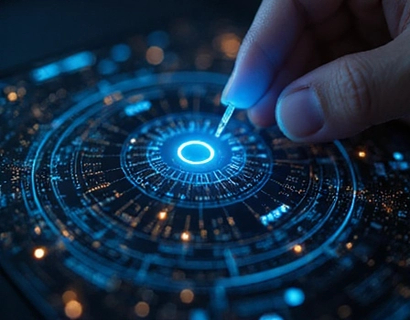Decentralized Innovation: Harnessing AI and Crypto for Next-Gen Digital Solutions
The intersection of artificial intelligence (AI) and cryptocurrency is giving rise to a new era of decentralized innovation. This comprehensive guide delves into how these technologies are merging to create next-generation digital solutions that enhance user experience and drive engagement in the rapidly evolving landscape of decentralized applications (dApps). For tech-savvy individuals and early adopters interested in cryptocurrency, AI, and dApps, this article provides an in-depth exploration of the synergies between these cutting-edge technologies.
Understanding Decentralized Innovation
Decentralized innovation refers to the development and implementation of technologies and systems that operate without central authority or control. This paradigm shift is driven by blockchain technology, which serves as the backbone for decentralized applications. Unlike traditional centralized systems, dApps distribute data and processing across a network of nodes, ensuring transparency, security, and resilience.
AI in Decentralized Systems
Artificial intelligence plays a pivotal role in enhancing the capabilities of decentralized systems. AI algorithms can process vast amounts of data efficiently, identify patterns, and make predictions, all of which are crucial for the optimal functioning of dApps. In the context of blockchain, AI can be used for smart contract optimization, fraud detection, and enhancing user interactions.
Smart Contract Optimization
Smart contracts are self-executing contracts with the terms of the agreement directly written into code. AI can optimize these contracts by analyzing historical data to predict potential issues, automate complex logic, and ensure that the contracts operate efficiently and securely. For instance, AI can help in identifying vulnerabilities in smart contract code, reducing the risk of exploits and enhancing overall trust in decentralized applications.
Fraud Detection
Fraud and malicious activities pose significant risks to blockchain networks. AI-driven solutions can monitor transactions and user behavior in real-time, detecting anomalies and potential fraudulent activities. By integrating machine learning models, these systems can adapt to new patterns of fraud, providing a dynamic and robust defense mechanism for decentralized platforms.
Enhanced User Interactions
AI enhances user interactions in decentralized applications by providing personalized experiences. Through natural language processing (NLP) and machine learning, dApps can understand user preferences and behaviors, tailoring content and services to individual needs. This personalization not only improves user satisfaction but also increases engagement and retention.
Cryptocurrency and Decentralized Finance (DeFi)
Cryptocurrency is a fundamental component of decentralized innovation, enabling the creation of decentralized finance (DeFi) platforms. DeFi applications offer financial services such as lending, borrowing, and trading without intermediaries, leveraging blockchain for transparency and security. AI enhances DeFi by providing advanced analytics, risk assessment, and automated trading strategies.
Advanced Analytics
AI-driven analytics can process and interpret large datasets from blockchain transactions, offering insights into market trends, user behavior, and potential investment opportunities. These analytics tools help users make informed decisions, optimize portfolios, and mitigate risks in the decentralized financial ecosystem.
Risk Assessment
One of the challenges in DeFi is managing risk, especially in complex decentralized protocols. AI algorithms can assess and predict risks by analyzing historical data, market conditions, and smart contract interactions. This proactive approach to risk management enhances the stability and reliability of DeFi platforms.
Automated Trading Strategies
AI-powered trading bots can execute trades based on predefined algorithms and real-time market data. These bots can operate 24/7, capitalizing on market opportunities and executing trades with high precision. In the context of DeFi, automated trading strategies can enhance liquidity, improve market efficiency, and provide users with new ways to generate returns.
Interoperability and Cross-Chain Solutions
Interoperability is a critical aspect of decentralized innovation, enabling different blockchain networks to communicate and exchange data seamlessly. AI can facilitate cross-chain solutions by optimizing data transfer, ensuring compatibility, and enhancing the overall user experience. This interoperability is essential for building a connected and integrated decentralized ecosystem.
Data Transfer Optimization
Transferring data between different blockchain networks can be complex and resource-intensive. AI algorithms can optimize this process by identifying the most efficient pathways, compressing data, and ensuring secure transmission. This optimization reduces latency and costs, making cross-chain interactions more practical and widespread.
Compatibility and Integration
AI can help in developing standards and protocols that ensure compatibility between various blockchain platforms. By analyzing existing systems and identifying common challenges, AI can propose solutions that facilitate seamless integration. This compatibility is crucial for creating a unified decentralized ecosystem where users can interact with multiple dApps and services without friction.
User Experience and Accessibility
Enhancing user experience and making decentralized technologies more accessible are key goals of the innovation driven by AI and cryptocurrency. User-friendly interfaces, intuitive onboarding processes, and educational resources are essential for broadening the adoption of dApps.
User-Friendly Interfaces
Traditional blockchain technologies often have a steep learning curve, deterring potential users. AI can simplify these technologies by developing intuitive interfaces that guide users through complex processes. Natural language interfaces and visual aids can make interacting with dApps more straightforward, reducing the barrier to entry for new users.
Onboarding Processes
Effective onboarding is crucial for user adoption. AI can streamline the onboarding process by automating tasks such as identity verification, wallet setup, and account configuration. By leveraging machine learning, these systems can adapt to user preferences and provide personalized guidance, ensuring a smooth and engaging onboarding experience.
Educational Resources
Education plays a vital role in democratizing access to decentralized technologies. AI can generate tailored educational content, from beginner tutorials to advanced courses, helping users understand the fundamentals and advanced concepts of blockchain and AI. Interactive simulations and virtual assistants powered by AI can further enhance the learning experience, making it more engaging and effective.
Challenges and Future Prospects
While the potential of AI and cryptocurrency in decentralized innovation is immense, several challenges need to be addressed to fully realize this vision. Scalability, regulatory compliance, and security remain key areas of focus for the industry.
Scalability
Current blockchain networks often face scalability issues, limiting the number of transactions they can process per second. AI can contribute to scalability solutions by optimizing network protocols, improving consensus mechanisms, and developing layer 2 solutions that enhance transaction throughput. Continued research and development in these areas are essential for building scalable decentralized systems.
Regulatory Compliance
The regulatory landscape for cryptocurrency and blockchain technologies is still evolving. AI can assist in navigating these regulations by providing real-time updates, compliance checks, and risk assessments. By integrating regulatory insights into dApps, developers can ensure that their applications meet legal requirements, fostering trust and adoption.
Security
Security remains a paramount concern in decentralized systems. AI can enhance security measures by detecting and mitigating threats in real-time, identifying vulnerabilities, and implementing proactive defense strategies. Continuous monitoring and adaptive security protocols powered by AI are crucial for protecting decentralized applications and user data.
Conclusion
The convergence of AI and cryptocurrency is paving the way for a new era of decentralized innovation. By leveraging the strengths of both technologies, we can create more secure, efficient, and user-friendly digital solutions. As the ecosystem continues to evolve, it is essential for tech-savvy individuals and early adopters to stay informed and engaged, contributing to the development of next-generation decentralized applications. The future of decentralized innovation is bright, and the possibilities are endless.













